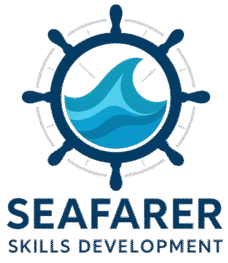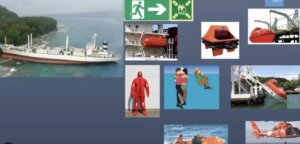Advanced navigation is a cornerstone of modern seafaring, blending traditional seamanship with sophisticated technology to ensure safe, efficient, and confident vessel operations.
As maritime routes grow busier and global shipping demands increase, seafarers must possess not only fundamental navigational skills but also a deeper understanding of advanced systems, situational awareness, and decision-making techniques. This chapter explores the essential concepts, tools, and practices that define advanced navigation in the contemporary maritime environment.
The Evolution Toward Integrated Navigation
Navigation has transformed dramatically—from celestial observations with sextants to fully integrated digital systems that aggregate information from radar, GPS, AIS, and electronic charts. Today’s navigators operate within Integrated Bridge Systems (IBS), which provide a unified display environment and significantly improve situational awareness. However, technology is only as effective as the officer who interprets it. Understanding how systems interact, their limitations, and how to cross-check data remains a vital seafaring skill.
Electronic Chart Display and Information Systems (ECDIS)
ECDIS is at the heart of advanced navigation. It allows officers to plot, monitor, and update routes digitally, reducing errors associated with paper charts. Key capabilities include:
Real-time position fixing using GNSS
Automatic route monitoring with safety contours, alarms, and warnings
Integration with radar, AIS, log, and depth sounder
Dynamic chart updates via ENC corrections
Competent ECDIS operation requires rigorous training, including manual plotting skills for redundancy and backup procedures. Seafarers must understand layers, safety settings, CATZOC values, and the dangers of overreliance on default alarms.
Radar and ARPA: Advanced Collision Avoidance
Radar remains essential for operations in restricted visibility, heavy traffic, or nighttime sailing. Automatic Radar Plotting Aids (ARPA) enhance radar usage by tracking targets and calculating CPA (Closest Point of Approach) and TCPA (Time to CPA). Advanced radar use includes:
True motion vs. relative motion interpretation
Use of parallel indexing for coastal navigation
Applying vector settings to predict target movement
Rain and sea clutter adjustment for optimal target detection
Mastery of radar technology involves constant practice and an ability to cross-verify radar data with visual bearings and AIS.
Global Navigation Satellite Systems (GNSS)
GNSS, including GPS, GLONASS, and Galileo, provides highly accurate position information. Still, advanced navigation requires awareness of vulnerabilities such as signal loss, multipath errors, spoofing, or jamming. Skilled seafarers use GNSS as one element in a broader navigational framework and always maintain alternative fixing methods.
Bridge Resource Management (BRM)
Advanced navigation extends beyond equipment to include effective teamwork and communication. BRM principles support safe navigation through:
Clear task delegation
Continuous information sharing
Challenge-and-response culture
Fatigue awareness
The best navigators integrate technical knowledge with strong situational management and leadership skills.
Environmental Awareness and Predictive Techniques
Modern officers must anticipate how wind, tide, current, and sea state influence vessel handling. This includes:
Tidal calculations
Current set and drift assessment
Weather routing and voyage optimization
Use of oceanographic data
Understanding environmental patterns allows officers to make proactive decisions, improving fuel efficiency and safety.
Emergency Navigation and Redundancy
Advanced navigation includes the ability to operate safely when systems fail. This means maintaining competence in:
Manual plotting and traditional coastal navigation
Celestial navigation as a backup discipline
Use of paper charts when ECDIS becomes unavailable
Redundancy ensures a vessel remains safe regardless of technology failures.—
In summary, advanced navigation combines technology, critical thinking, and seafaring tradition. A well-prepared navigator understands modern systems deeply but can also operate effectively without them. Mastery of these skills creates safer voyages, enhances operational efficiency, and upholds the professional standards expected of today’s mariners.
And much more, like-
Using GPS And Electronic Chart Display Systems,
Understanding Radar And Its Role In Navigation,






